










Danger! Ahead








































Establishing a business environment that encourages staff—especially when working in split shifts—to work together for a common cause.
Matt Miller, president of laundry equipment distributor Coin-OMatic, shares what he describes as key factors to successfully develop a laundromat when starting from zero.
For someone considering self-service laundry ownership, there are lots of questions to be answered while on the path to opening a store. The last thing an investor wants is to fall victim to an avoidable stumbling block. Here’s how to dodge those possible pitfalls. 8
Retired multi-store owner Paul Russo says the day you open the doors to your new laundromat, its general condition will begin declining ... unless you have a plan to prevent it. Mats that look like new always attract customers, but the busier they are, the more time, effort and money will be required to keep them in that shape. Russo favors adopting a proactive store-cleaning policy and describes the framework.
American Coin-Op has released podcast episodes on a variety of industry-related topics? Give one a listen at AmericanCoinOp. com/podcasts.

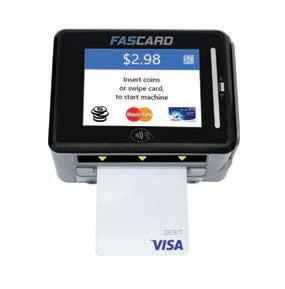


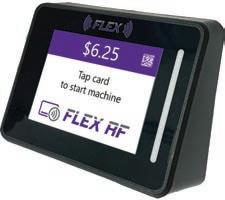


 Bruce Beggs
Bruce Beggs
As has been this publication’s mission for many years, each issue of American Coin-Op offers content of interest to self-service laundry owners and operators no matter their depth of experience or length of ownership.
It just so happens that this month, our content leans more heavily toward the new investor and laundry owner-to-be.
May’s cover story, “Finding Success by Sidestepping Pitfalls,” should catch any reader’s eye but is right on target for anyone pursuing self-service laundry ownership for the first time. It opens on page 6.
Getting tripped up by an obstacle that could have been avoided is the last thing anyone wants to happen, so we called on some equipment manufacturer reps to identify some “newcomer” missteps or errors they frequently see and how they can potentially be avoided.
If you intend your new store to be attended, then “Fostering Teamwork in the Laundry” starting on page 10 should be of interest. I spoke to a trio of store owners about establishing a business environment that encourages staff—especially if they work in split shifts—to work together for their common cause.
Columnist Paul Russo spent 40-plus years in laundry ownership. During his career, he says he was anything but passive when it came to cleaning his facilities. In this month’s Pointers from Paulie B beginning on page 14, he describes “Adopting a Proactive Store-Cleaning Policy” and its framework.
And on page 20, Matt Miller from laundry equipment distributor Coin-O-Matic shares some key factors to successfully develop a laundromat when starting from zero.
I think we have a little something for everyone this month but if you’re considering laundry ownership or just opened a store, I have to believe this issue speaks to you.
Bruce Beggs Editorial DirectorCharles Thompson, Publisher
Bruce Beggs, Editorial Director
E-mail: bbeggs@ATMags.com
Phone: 312-361-1683
Mathew Pawlak, Production Manager
Nathan Frerichs, Digital Media Director
E-mail: nfrerichs@ATMags.com
Phone: 312-361-1681
ADVISORY BOARD
Douglas Pratt Michael Schantz
Tony Regan Matt Simmons
Sharon Sager
ADVERTISING
Linda Lee, National Sales Manager
E-mail: Linda@ATMags.com
Phone: 218-310-6838 or 312-361-1682
OFFICE INFORMATION
Main: 312-361-1700


POSTMASTER, Send changes of address and form 3579 to American Coin-Op, Subscription Dept., 125 Schelter Rd., #350, Lincolnshire, IL 60069-3666. Volume 65, number 5. Editorial, executive and advertising offices are at 650 West Lake
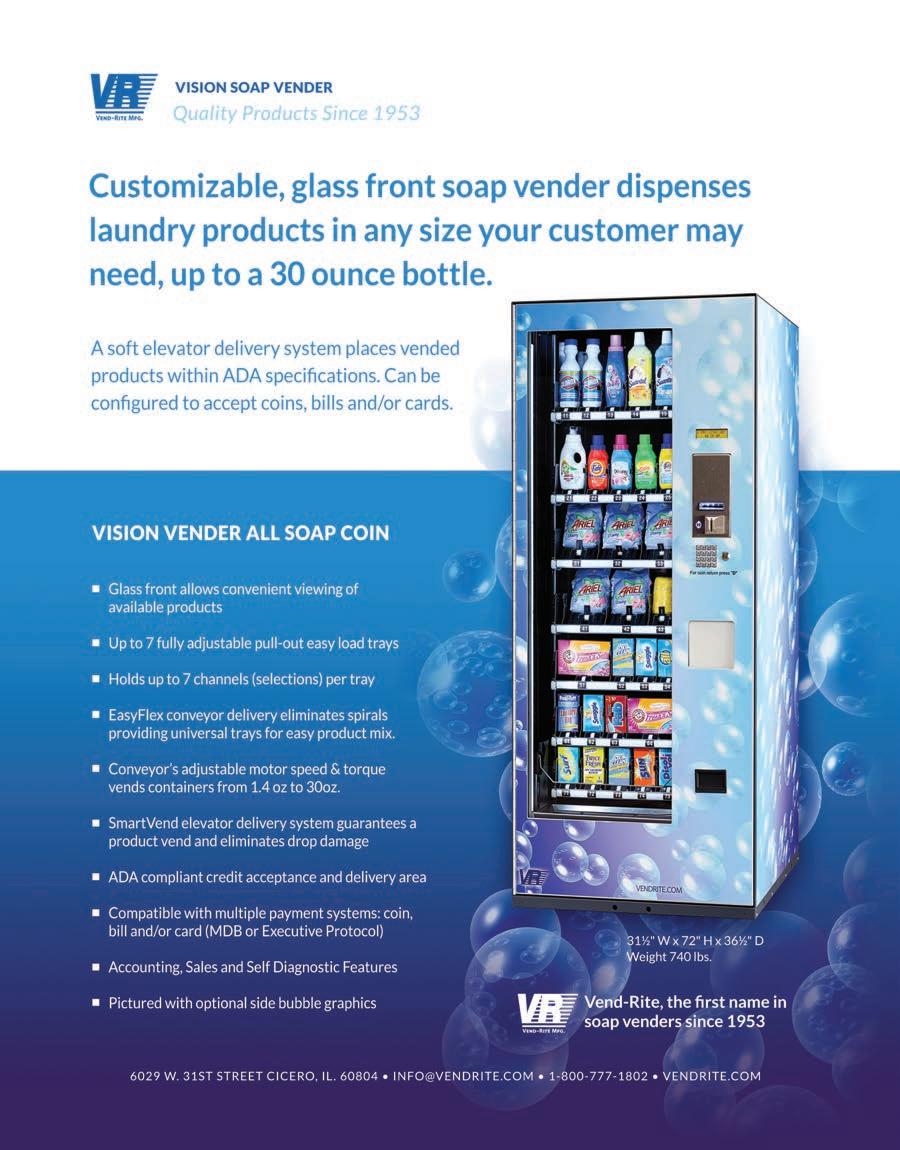











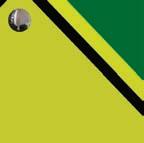























or the investor considering self-service laundry ownership, there are lots of questions to be answered while on the path to opening a store. And the last thing he/she wants to do is fall victim to a stumbling block that could have been avoided.
American Coin-Op invited representatives from some of the industry’s vended laundry equipment makers to identify some missteps or errors they frequently see occurring as newcomers try to establish themselves and their businesses. These experts offered their insights specific to certain steps along the store creation and development path.
Allen Berndt, regional sales manager for Dexter Laundry: Everyone wants a high-profile location with good traffic but there is such a thing as having too much traffic. High traffic counts can limit your entry and exit access. It is important to remember that the average customer is a woman with children and is carrying a large load of laundry. If she is forced to park too far from the facility and battle cross traffic in the parking lot, it may be easier for her to choose a laundromat with easier access. A few ways to accommodate customers in high-traffic parking lots would be to have reserved parking or designated loading and unloading zones.
Mike Hand, vice president of North America Commercial Central and East for Alliance Laundry Systems: Investors some-



times will ignore site red flags such as poor visibility, poor parking, ingress/egress and lease length in placing greater weight on the lease rate. This strategy will almost always backfire. Your distributor and manufacturer-based finance experts act as extra sets of eyes in reviewing site elements and demographics to help ensure a successful business from the start.
Tod Sorensen, general manager of Girbau North America distributor Continental Girbau West: Before you commit to a location/ building, ask your equipment solutions distributor to check it out and provide feedback. They are the experts in vended laundry development. If they see a red flag related to your site selection, they’ll let you know. If one of the following isn’t favorable—lease, ingress, egress and visibility—it disqualifies your location.
Hand: Some new investors look to cut upfront costs by setting a plan to “add that later.” In virtually every instance I’ve seen, the owner regrets that decision. So, do it right the first time; don’t “stage it out.”
Sorensen: When considering customer personal space and flow, there are three fundamental stations in laundry, not including enter, exit and the service counter. Be sure there is ample workflow from wash to dry to folding stations. It must be an uninterrupted customer flow pattern at what would be peak capacity.


BEARING KIT, L1075


















Berndt: With new stores, make sure you are planning for optimal customer flow. This includes making the aisles as wide as you can to accommodate customers during your busiest times. When retooling existing stores, make sure you know what your long-term goals are to ensure you don’t limit your ability to add or replace machines down the road.
Sorensen: Utility expenses are a laundry owner’s largest monthly expense and, as an owner, you have no control over them other than to make wise equipment choices. Making an equipment decision on price alone will cost you more over time than the one-time purchase of high-performance laundry equipment.
High-performance laundry equipment can save you thousands in installation costs because hard-mount washers require added concrete and heavy metal base frames and bolts. High-performance machines deliver lower operating costs over time and generate more revenue through cycle options, ozone, extra add-ons and faster customer rotation rates. Simultaneously, those high-performance machines, with added revenue generators, will set your store apart from the competition and draw customers from apartment laundries.
Berndt: Working with a distributor that has financing support provides options for owners to acquire their equipment. Whether you purchase or lease equipment, your distributor will help provide guidance on what may be best for your situation. When determining equipment mix, make sure you understand your customer base and demographics. Most laundromat customers gravitate toward the larger machines to expedite the processing of their laundry. Smaller washers are also still suggested for customers with smaller loads of laundry.
Hand: The biggest mistake is ignoring the value of a full-service distributor. Owners who buy strictly on lowest price, and discount the importance of a distributor who installs and services equipment with in-house staff, are at a supreme disadvantage. Work with a reputable fullservice distributor with ample references and experience in the vended laundry market.
Berndt: Do not worry too much about your competitors’ washdry-fold (WDF) pricing. Focus on differentiating your business from others with superior quality and service. Customers will pay more for a better experience. Don’t take on WDF just for more volume; you need to be profitable for this business segment to be sustainable.
Hand: A major pitfall is waiting to increase vend prices even though your utility costs have gone up. I cannot overstate how frequently this mistake is made. Every day or week that goes by without keeping pricing in line with costs means revenue lost that can never be recaptured.
Sorensen: Know your cost basis on every cycle to arrive at your vend price.
Hand: All too frequently, owners assume: “My customers will never embrace cashless payment.” As a society, we are increasingly cashless. Owners who are leery of 100% cashless can offer multiple options for payment to ensure the greatest potential to meet all customers’ needs.
Sorensen: You should allow the customer to pay their way. The most popular payment method is by card. Customers can add value at
the washer/dryer or via value transfer. This allows you to pay via app, credit/debit, EBT or cash.
Berndt: Customers want payment options. They will spend more on average when paying via mobile app or credit card versus cash. Customers will also gravitate toward bigger machines if they can pay via mobile app or credit card. Accepting customers’ payment any way that they would like to pay is a good business practice. Accepting multiple payment methods also relieves pressure from your change machine and may reduce collection time.
Al Adcock, vice president of sales and marketing, B&C Technologies: Vended laundry equipment, like any other machine, contains many moving parts that need attention from time to time. If the machines and property are not looked after and maintained properly, the return on investment will be poor. Instead of profits, expenses for repair and downtime will loom large, reducing efficiency and profitability.
Doing simple things like keeping the machine clean, tightening loose fasteners, lubricating at correct intervals, and performing routine inspections can alert you to problems before they become expensive and difficult to manage.
Before ordering, contact the technical service department for your commercial laundry machine and ask them about routine maintenance. Talk to your local dealer to ask about maintenance training that should be done, even if you don’t have a dedicated maintenance staff. Most distributors provide routine maintenance plans which will save time and money on maintenance and repairs.
Take photos of machinery when new to use as a visual reference when there is a problem.
Talk to attendants. Since they are in the store when customers are operating the machines, they are typically the first to hear that something isn’t quite right, or that there is a performance issue. Believe your employees when they say something isn’t normal.
While trickier than it sounds, finding a service technician that you trust to maintain your laundry properly is critical. Typically, the most competent technician will not be the least expensive in terms of labor cost, but will save you time and money by diagnosing the problem correctly the first time.
Sorensen: Develop a maintenance schedule at start-up. Establish a daily, weekly, monthly, quarterly and annual schedule for equipment maintenance and store cleaning. Most equipment manuals have maintenance guides to follow.
Berndt: Regular maintenance will ensure your machines continue to run properly and efficiently for years to come. This in turn may catch minor maintenance issues before they become more expensive long-term issues. Keeping your dryers lint-free maximizes efficiency and safety. Checking drain valves and pressure switches periodically will ensure that your washers are using the proper amount of water.
Hand: The obvious miss regarding maintenance and cleaning? Ignoring it. Your bottom line depends on your equipment running. Do the preventative maintenance. And when it comes to cleaning, ask yourself a simple question: Would you bring your laundry to this store? If not, you and your staff have cleaning work to do.
Watch AmericanCoinOp.com during the month of May for added insights into ‘Sidestepping Pitfalls’!























all customers, no phone or account needed
Accept cards, mobile, gift cards, coupon codes, and more











 by Bruce Beggs, Editorial Director
by Bruce Beggs, Editorial Director

Having faced a tighter labor market these last few years, hiring and retaining laundry attendants who work well with others is as important as ever. One way to help that part of your business is to create and sustain an environment that supports staff and encourages them to work together for the common cause.

To hear a bit about their stance on teamwork and the steps they take to inspire store managers and attendants to work as a unit, American Coin-Op interviewed a trio of veteran store owners from around the country.
Yvette Morton Williams is president and chief inspiration officer for a small chain of metro Atlanta upscale laundromats that employs more than 20 people. Among the group’s offerings are a 5,000-square-foot full-service store that offers wash-dry-fold and some smaller, self-service stores that are “mostly staffed.”


Good teamwork makes a business a pleasant place to work, Williams believes.
“If you have to spend so many hours in any given place, you want to hopefully enjoy it, enjoy the people that you’re with,” she says. “It’s real important for us because it lets our customers feel the positive vibes all over, so every touch point, it just makes for a better customer journey when we have good teamwork.”


Calling himself a “fully diversified laundry professional,” Patrick Dreis owns three Southern California laundromats and a commercial plant where his staff processes fluff-and-fold orders.
“At the laundromats, our team members usually work alone. At the commercial plant, they work side by side. It does make for differences in how these people are managed,” he says. “At the mats, it’s more about customer service. They need to be able to communicate effectively, so, all our team members are bilingual. At the plant (we call it the Castle), they work much more closely with the same people every shift.”


Tom McEwen Jr. has an ownership stake in two unattended stores in the Rochester, New York, area, but recently sold an attended store



where five employees split shifts with no more than one on duty at any given time.
“You want to hire somebody that will bring a ray of energy and sunshine into the place when they come,” Williams says. “I look for longevity in their previous roles because that tells me if you aren’t a good team member, more than likely you haven’t been able to maintain a job for any period of time.”
She looks for management experience or a history of promotion because that indicates they were valued where they were: “It’s an unusual workplace that will promote somebody who’s not good at teamwork.”

Dreis says he’s just begun asking new interview questions of job seekers.
“I’m borrowing/stealing them from a (convenience store) company called Kwik Trip. ‘1. Tell me about your last random act of kindness. 2. Tell me about your volunteer work in the community.’ I just want to work with nice people.”
“Communication was very important” to his staff working as a team, McEwen reflects.
“They would help each other between shifts,” he says. “Every now and


then, there was a little ruffle of feathers where one attendant wouldn’t like talking to one of the others, a personality conflict.”
But apart from those rare occasions, staffers would consult one another at shift change to describe the work that had been done or was being done, review a quick inventory of supplies, learn if any customers had presented a problem, etc.
“You want to make sure that (your attendants) have some sort of continuity of duties,” Williams concurs. “In the smaller stores, there generally aren’t two people working at the same time, so it’s especially important that they’re able to explain what happened in the shift before them or leave a note.”
She places a premium on attendants skilled at written as well as oral communications. If there is a gap between the next attendant coming on duty and them, it’s not unusual for her attendants to text one another or use the chain’s GroupMe group chat to pass along key information.

The consistent reinforcement of store procedures is important to customers, says Williams, “because they will come to expect the same type of interaction with our team no matter who’s there.”
(continued on page 17)




When buying or building a new laundromat, you have three basic goals: 1) you want a busy mat that will be profitable for years, 2) you want to attract customers and then have them return again and again, and 3) you want a good resale value for when you eventually sell.
The day you open your doors, your mat’s condition will begin declining … unless you have a plan to prevent it.
You can keep your equipment looking new for quite a while by changing worn-out keypads and decals, etc., but eventually you have to bite the bullet and retool, lest your mat go downhill and lose its appeal and thus its sales value.
Mats that look like new always attract customers, but the busier your mat is, the more time, effort and money will be required to keep it in that condition.
This month’s topic is less dramatic but just as important. After all, what good is new equipment if your mat is dirty?
Keeping your mat immaculate at all times isn’t always easy but it’s the first proactive thing you can do. It needs to be very clean always to attract “helper customers.” Some customers tend to respect really clean mats more than they do a dirty mat. In the latter, it’s no big deal for a customer to add to the litter, trash and grime because, from the look of things, nobody cares, right?
There are basically two types of cleaning. The first is to simply wipe, sweep, spot-mop and clean as much as possible every hour of every day. The second is deep cleaning, getting at the stuff that slowly builds up.

You Want Surfaces That are Easy to Clean — When building or redoing your mat, keep “easy to clean” in mind when choosing any surfaces. You don’t want porous surfaces where stains can soak in, or highly textured surfaces that are harder to clean.
The exception here is your floor. It should not be high gloss, because then it becomes too slippery when wet.
When trying to decide what surfaces hold up and are easy to clean, visit your local fast-food chain stores for ideas. The amount of dirt, litter and abuse they constantly endure is even more challenging than our industry!
Some Customers Will Help Keep Things Clean, but Most Will Not — Isn’t it great when a customer picks up a rag to wipe down “their” machines? If you only had more customers like that! Maintaining a very clean mat at all times attracts these kind of loyal customers in the first place.
Some other customers will throw things all over, not caring how they are trashing your mat. Then there are those in the middle who won’t help clean but also won’t trash your place.
Sanitize Your Mat — After COVID, people are more aware of germs. Reading that your place is “sanitized” daily is like a breath of fresh air.
Sanitizing can be safe and easy if you use 3% hydrogen peroxide. It’s cheap, odor-free, safer than other disinfectants, and easy to use. It will kill bacteria, spores, viruses and fungi.
You can screw most spray heads directly onto peroxide bottles, which are brown because light exposure breaks down the chemical inside.
Spray any surfaces you want, paying attention to things people touch such as doorknobs, touch pads, buttons, handles, ATMs, etc. Let the peroxide sit for about five minutes, then wipe.
If customers see your attendant walking around with a spray bottle, they will be impressed. Some may even tell their friends.
A Clean Mat Isn’t Just About Cleanliness — Want to avoid lawsuits? Keep your floors clean and dry. Spilled liquid detergent or softener is extremely slippery, and even used dryer sheets on the floor can cause a slip-and-fall.
You see, a clean mat is not just about cleanliness. It’s also about safety.
Side note: Install enough cameras to protect yourself against fraudulent slip-and-falls.
Low Prices Equals More Effort to Keep Your Mat Clean — Common sense here: the busier your mat becomes, the harder it is to keep clean. If you’re finding it hard to keep things clean, it may be a cue to raise your vend prices.
Low prices attract bargain hunters who care about price more than anything else. With this crowd comes a greater
percentage of disrespectful customers. I was amazed at how some people wouldn’t even bother to use our trash pails and just throw everything on the floor!
Assign Someone Specifically to Deep Cleaning — To complete your deep-cleaning tasks reliably, you need to put specific people in charge of them. You can accomplish this without extra pay if they are the only ones who hold the key to the little treasures that show up in the dryer lint compartments.
This makes them responsible, rather than part of a general cleaning policy where crew members can cherry-pick the lint compartments, or pass the buck when the store is not clean.
Every Employee Must Leave the Store Clean at Shift’s End — To just tell your crew that the store must be clean at the end of their shift is always a good idea. (This rule was practically carved in stone in my mats.) If it’s not, they’ll hear it from the incoming shift, who may also report it to you: “Boss, check the cameras at the start of my shift yesterday.”
Posting a list of cleaning duties for each shift is the best way to keep everyone aware of their responsibilities. If a task is not done but it’s right there on your list, the culprit can’t say they didn’t know.
You can have a single “deep cleaner” do all of the tasks, or you can put specific people in charge of specific tasks. Both choices work. But keep in mind that some people actually enjoy cleaning, so see if you can find people like that.
The graveyard shift in a 24-hour mat is especially useful for this.
Keep Logs on Cleaning Tasks — When someone is trashing your restroom, keeping track of cleaning tasks as they’re completed can be useful in helping you identify who might be responsible.
People aren’t supervised in restrooms, obviously, so install a camera just outside the restroom, focusing on the door.
To catch a “trasher,” have your crew clean the restroom every hour and take before-and-after photos with their cellphone each time; make sure the images captured carry accurate time stamps. You’ll eventually narrow things down to the customer who may be trashing it.
Flip the Broom to Get into Nooks and Crannies — As your crew mops your store, swirling the mop around pushes dirty water into the edges of the floor. When the water dries, the edges are left with a thin coating of crud. After a while, layers accumulate into a thicker, visible layer of dirt.
You can use a brush on a stick, or try duct-taping a putty blade to the top of a broom handle. As a crew member sweeping the floor comes across a crud-filled corner, they can flip the broom over and use the blade to quickly scrape out the dirt.
Cleaning Washer Soap Boxes — In my experience, they need to be cleaned well every 24 hours. The lids should also be kept open overnight, if possible, to air out and avoid mildew. Or, finish up with a shot of 50/50 bleach and water in a spray bottle and let it sit overnight.
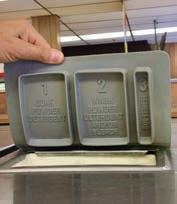


A step stool, a couple rags, a small bucket of hot water, and some decent sink brushes and toothbrushes are good tools.
Some mat owners like to use a steam sprayer; the steam melts the caked-on softener stains.
If you start to see encrusted white calcium deposits on stainless steel tops, you can rub them down with a product called “Bar Keeper’s Friend.” Comet or

Tuesday, June 11, 2024, 10:30am - 2pm
Wednesday, June 12, 2024, 10:30am - 2pm
Wednesday, July 17, 2024, 10:30am - 2pm


Ajax can also be used safely because they have new formulations that won’t scratch metal. (It’s a good idea to check your equipment’s owner’s manual for cleaning guidance before trying new products.)
A light layer of calcium can usually be removed right away. But if the buildup is significant, keep rubbing them down every night.
There are mild acid products in your supermarket that can soften up and remove calcium, lime and even rust.



Make Door Gaskets and Rubber Lids
Look Like New — Even the best-quality rubber will eventually get black mildew stains. Once a week, spray the door gaskets with Tilex or Clorox Cleanup, or make your own spray of 50-50 water and bleach.
First, get a popsicle stick or screwdriver and wrap one layer of a rag around the tip. Lift the gasket off the glass enough so you can insert the rag-covered stick, then run the tip all around the inside of the gasket where it meets the glass.

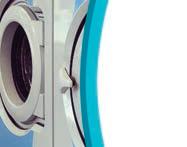

That will gently scoop out any dirt and debris.
Next, lift up the gasket from the glass near the top of the door again and shoot some spray inside. Capillary action will run the bleach all around the inside of the gasket, down to the bottom of the door. Wipe any excess bleach off the inside glass so customers don’t get it on their laundry. If you can let that sit overnight, you’ll be pleasantly surprised in the morning.
It’s also a good idea to spray the inside of your soapbox lids if they’re rubber. Once you have the staining under control, this cleaning only needs to be done once a week as maintenance.
Use Humor to Get Your Point Across — I used to tell my crew, “I want this store so clean that customers will need sunglasses when they walk in.”
However “shiny” you’d like your store, I wish you luck in keeping her spick-and-span.
Paul Russo owned and operated multiple laundromats in New York City for more than 40 years before retiring in 2018. You’re welcome to direct any questions or comments for Russo to Editor Bruce Beggs at bbeggs@atmags.com.











(continued from page 11)
“At the mats, I leave written pages with projects, notes, info they need,” Dreis says. “We’ll also have some face-to-face, ‘all hands’ meetings. At the Castle, we have production meetings at the beginning of each shift. They’ll review all the orders in process and scheduling for pickups and deliveries.
“I think just being nice and fair with everyone is pretty basic advice. Have a plan, explain their role, and then let them work. I try not to micromanage.”
“I reward my crew with praise, free laundry, and cash,” says Dreis. “I’ll always loan them money when they ask. I’ve had two people quit in the past five years, and I’ve let three go. Pretty stable work environment.”
“They weren’t just punching a clock and getting a paycheck,” McEwen says in describing his staff. “They were like family.”
Aside from paying commissions on wash-dry-fold orders, he recalls gifting attendants on birthdays and Christmases, providing treats on other holidays and special occasions, and even Thanksgiving meals.
Williams presents what she calls the “Caught Being Awesome Award.” She gives the honor to team members who are singled out by another for noteworthy performance.
“In my experience, that’s always especially important and valuable when you’re recognized by people who do the same thing that you do.”
She also shares in team settings the positive customer comments submitted through in-store comment cards or online review.
“I love it because everybody jumps in and there are so many claps, hugs and virtual hugs over our GroupMe messages that go back and forth,” Williams says. “It just makes everybody feel so good and understand that what you’re doing is not just about you. You’re touching people.”
What should a self-service laundry owner ask of him/herself when it comes to team-building?
“For owners, it’s always helpful if you do everything you ask of your team yourself at some point,” Dreis says. “I’ve ironed a lot of shirts, worked the line, and plunged out a few toilets over the years.”
“The owner needs to be part of the teamwork,” believes McEwen. “You want to be friendly with your attendants. You want to be part of the team, not just telling your attendant, ‘Go clean the bathroom.’ Go clean the bathroom yourself sometimes. You want to work alongside them.”
“Am I doing what I can to make my team feel like they’re valued? Offer incentives and rewards when we can. Sometimes randomly. I think that’s always a good thing. Some of the best things that have happened to me have been unexpected.
“If I get a good idea from a team member, if I’ve asked them for it or not, to act on it, if I can, and then to give them the credit for it. I think all of those things really kind of work together to make a good environment for a team.”





peed Queen believes that no tumbler on the market today is as innovative and impactful as its 75-pound capacity model equipped with the Quantum Touch control and ProCapture advanced lint collection system.
First, ProCapture answers an industrywide call for a solution to lint and all the associated problems it brings. It uses patent-pending cyclone technology to capture 98% of dryer lint, a significant increase over the lint screens used in most commercial tumble dryers, according to Speed Queen. The technology brings a variety of advantages to laundromats, including reduced service and maintenance costs on everything from HVAC systems to water heaters, and other electronics/ components.
The brand says the industry-first feature will drive improved tumbler performance, reduce staff time spent cleaning lint compartments, and reduce maintenance costs — all benefits that deliver real dollars in savings to laundromat owners.
The Quantum Touch control takes return on investment to new heights. Since its launch, the touchscreen control has delivered additional revenues as one of the only controls to offer cycle modifiers on the dry side. These premium cycle options continue to be popular … and profitable for owners.
https://speedqueencommercial.com
exter Laundry says its C-Series T-50x2 (50 pounds) Express Stack Dryer makes it easier than ever to add drying capacity to a laundromat. With two dryers in a single footprint, a laundry owner can maximize space and revenue while still delivering the same commercial-grade performance they expect, the company says.
Beyond that, the T-50x2 offers PLUS cycle features, promotional options, and reversing or non-reversing tumble dry. With a single location for gas, electrical and venting connections, the T-50x2 is easier to install and maintain, Dexter says.
Also available in 20- and 30-pound models, there are options to best suit the needs of the laundry owner and their business.
Dexter says it builds products that provide customers with the efficiency, flexibility, performance and durability needed to get the job done. Backed by warranties and live lifetime technical support, the owner can be confident in their investment.
800-524-2954 | https://dexter.com

Continental Girbau says its high-performance ExpressDry+ Dryers are engineered for superior efficiency, programmability and ease of use. Its stack models are available in 30- and 45-pound capacities and its single-pocket models 30, 55 and 75 pounds capacity.

ExpressDry+ Dryers feature dual motors that provide separate power for basket rotation and airflow; a multiple-burner heat system to quickly reach desired temperatures; standard reversing to eliminate laundry tangling; a highly programmable control; and an instant electronicspark ignition and inverter motor control for added reliability, lower noise levels and reduced start-up time, Continental says.
ExpressDry+ Dryers offer a compact footprint; stainless steel cylinders with mirror-polished backplates; selfcleaning lint screens; and oversized, steel doors with heavy-duty hinges. Designed to perform through years of constant use, ExpressDry+ Dryers are backed by a factory warranty. 800-256-1073 | www.gnalaundry.com
LG Platinum Commercial Dryers—the Giant C (22.5 pounds capacity) and Titan Pro (35 pounds capacity)—are available in single and space-saving dryer/dryer and washer/dryer stack models and come ready to accept most alternative payment systems, including card and mobile payments, the brand says.
Plus, a kit can be added to single-pocket models to allow for operation via coins. Both dryers have partner LG Commercial Washers and are available in electric and gas models.
Offering large drums and superior tumble action and load separation, heat moves effectively through loads for a quick and efficient drying cycle, LG says. Additionally, electrode sensors automatically monitor load temperature and moisture and adjust final drying time for excellent drying performance. Timed dry is also available.

Equipped with heavy-duty motors that provide improved airflow and heating for better drying action, LG Platinum Dryers also feature a steel control panel with multilingual readout; tempered glass; reversible door; and premium powder-coated finish.
Intuitive programming allow operators to choose from a variety of functions and programs, including vend price, cycle time, cycle parameters and more. Meanwhile, AdaptAble™ controls are kept within easy reach.
LG Platinum Dryers are backed by warranty.
It’s no surprise that large-capacity equipment continues to be popular with laundry customers. With this in mind, Huebsch says its 75-pound tumbler is the perfect complement to a laundromat’s multi-load washer-extractors.
Huebsch tumblers are renowned for their speed and efficiency, making them workhorses for laundromats seeking to maximize turns, while reducing utility costs.

Pellerin Milnor’s coin-operated dryers deliver high productivity and high profits, the company says. The dryers provide gas-saving, fast-drying units for coin laundries of any size. Available in either single-pocket or stack models, they deliver high performance and dependability in a small footprint.


The brand is now adding to the benefits column, it says, by essentially solving the issue of lint and problems it creates for stores.
ProCapture uses patent-pending cyclone technology to capture 98% of dryer lint — a significant increase over the lint screens used in most commercial tumble dryers. The technology brings a variety of advantages, including reduced service and maintenance costs on everything from HVAC systems to water heaters, and other electronics/components.
The feature is an industry first that Huebsch says will drive improved tumbler performance, reduce staff time spent cleaning lint compartments, and lower maintenance costs — all benefits that deliver real dollars in savings to laundromat owners.
https://huebsch.com
Models include 30-, 50- or 75-pound single pockets or 30-pound or 45-pound stacks, and feature a simple, easy-to-use control. The M330C (2x30) dryer also features a steel door with gasketless glass, high radial airflow and high heat input levels, which keeps customers happy with fast dry times.
The M330C dryer is coin or card-reader compatible and has large, reversible doors that make loading and unloading easy. Service access is easily achieved through the front or rear of the unit. Front panels are available in white or almond with stainless steel option, and the M330C fits through a standard 36-inch door. Fire Suppression System is available as an optional feature.



Matt Miller’s presentation title was brief and attention-grabbing:
“How to Make Money in the Laundromat Business.”
Flanked by boxed washers and dryers on either side in his company’s warehouse, Miller, the president of laundry equipment distributor CoinO-Matic, shared what he described as key factors to successfully develop a laundromat when starting from zero.
His suggestions—crafted from decades of industry experience—were aimed at investors and entrepreneurs attending his company’s Laundry Business Excellence Expo last year. Here they are:
1. Know Your Limitations
Know them both in terms of time and of finances. Where time is concerned, geography (especially the mileage between your store and your home) makes a huge difference in the amount spent, as does your decision to have an unattended store or an attended store (will you work

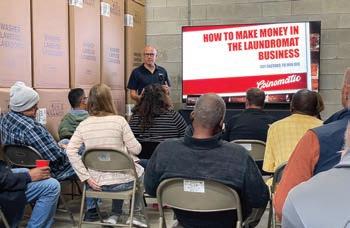
With boxed laundry equipment stacked on either side, Coin-O-Matic President Matt Miller shares his checklist for “How to Make Money in the Laundromat Business.” (Photo: Bruce Beggs)
there, or will it be someone else?).
If it’s the owner’s first time in business, they should have a credit score greater than 670 and the ability to finance an amount less than or equal to two times their net worth. Expected equity is 20-40% of project cost plus having three times their monthly operating expenses available in a checking account.
2. Establish Your Rolodex
In no certain order, build these contacts and relationships: mentor, chief financial officer, banker, legal counsel, accountant, laundry equipment distributor, branding agency and advertising agency. For each, it’s important for there to be mutual respect and for both parties to enjoy the other’s company, Miller says.
3. Recognize Your Laundromat’s Revenue Streams
They can include self-service income; chemistry sales (detergents, color-


safe bleaches and softeners); food, soft drinks and more; and full-service income from drop-off and pickup and delivery wash-dry-fold service.
4. Establish Your Brand
Your brand conveys your vision and establishes your presence and culture, Miller says. Enlist the aid of a professional branding agency to help you establish your business name, mission statement and a comprehensive theme (including colorways and fonts, interior design, and signage).
5. Find a Banker
Develop a relationship with a banker who you like and trust, because it will be important to your long-term success.
6. Time to Get Legal
Purchase your domain name and trademark it. Establish the legal entity (limited liability company or type of corporation) and document a succession plan with your partners and/or family. About the latter, Miller says, “Get it out in the open and it’s done.”
7A. Finding the Best Location for You
Locate a site within your desired geography and with the right demographics for a laundromat. Given your budget, choose the best available size, accessibility, parking, visibility and infrastructure that helps keep costs down. A well-run new or rehabilitated laundromat will win over most customers within a given market, Miller believes.
7B. If the Location will be Rented...
Find a landlord who’s likable and trustworthy and get to know them before you sign on, Miller advises. Look for a long-term lease, because this laundromat is for future owners, too, and the longer the lease, the higher







the business is valued.
8. Equipment, Amenities and Payment System
Seek equipment features that customers want and are unique to your market. Equipment mix and layout must match the location’s demographics, Miller points out. You want efficiencies to keep variable costs down and to “give customers their day back.” Also, look for an accessible, easy-to-use payment system and a proper accounting system that keeps you in control of your business.
9. Construction
A well-built laundromat can save you a fortune, whereas problems equal headaches plus surprise expenses. Only use contractors experienced in laundromat projects, because these projects are highly utilitydependent and “a lot more complicated” than they look, Miller says. At the end of the day, a laundromat is a reseller of utilities, so quality and efficiency are king.
10. Marketing
Your brand drives everything—website, digital ads, social media, print media, direct mail and email—so find a partner to help develop and execute your advertising. After all, today’s marketing rules are advancing by the hour.
In closing, he was asked which one or two points from the 10 he might emphasize.
“Be honest with yourself about time, because it’s not just a new baby. This is only the start,” Miller says. “And pay attention to your finances so that you’re not going to be strung out.”














2024 RATES: One- to five-time rate: $3.00 per word, boldface $3.05 per word. Minimum charge: $50.00 per ad. Call or write for our six- and 12-time rates. If box number is used, add cost of 5 words.


Display classified rates are available on request. All major credit cards are accepted.
DEADLINE: Ads must be received by the 1st of the preceding month. For

example, for a July ad, the closing date is May 1st.





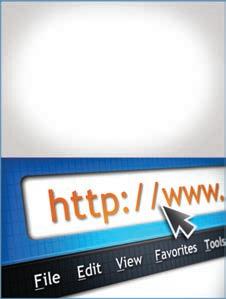


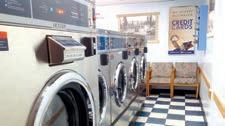

• They Say It’s Unaffordable


haven’t laundry owners added credit card acceptance on their washers and dryers?

• They Think There Are Too Many Choices
• They Heard It’s Difficult to Install and Use CryptoPay answers ALL of these






Huebsch

Cents, a business management and in-store operations platform that enables laundromat owners to start, manage and grow their business, and Laundroworks, a loyalty card payment system for laundromats and multifamily shared laundry rooms, have joined forces, the two announced.
Together, the two companies will endeavor to create a true all-in-one solution by pairing Laundroworks’ affordable and reliable on-machine payment systems with Cents’ full-service laundry point-of-sale and business management system.
Cents and Laundroworks say they will offer “industry-leading products, with powerful integrations,” while dedicating significant resources to Laundroworks product development and support infrastructure.
“We exist to provide our operators with a unified hardware and software platform to power every facet of their business,” says Alexander Jekowsky, CEO of Cents. “Oleg (Stepanov) and the Laundroworks team share the same vision and passion for our industry, and I could not be more excited for what this partnership will unlock for our customers.”
Stepanov, CEO of Laundroworks, says his business understands its responsibility to its customers and is committed to realizing its mission.
“Our team wanted to build more products, deliver even better support, and have the ability to build on the business my family started over 10 years ago,” he says. “Joining forces with Cents only strengthens that commitment and will expand our ability to create amazing products for local laundries, multi-family buildings, and their customers. We will have more resources to double-down on the core Laundroworks technology.”
There will be no product interruptions or impact on existing support, the partners say, and Cents adds that it is excited to welcome the entire Laundroworks team to continue building upon its powerful product line.
NEW PAYSTRI PROGRAM PROTECTS CCI CLIENTS FRON CHARGEBACKS
Payment processing company Paystri has launched a new program created specifically to protect its Card Concepts Inc. (CCI) laundromat owner clients from chargebacks and fees that cut into profits.
Research shows that 50% of laundromat owners experience chargebacks, Paystri says, losing an average of $50 or more per fraudulent or contested transaction in fees and lost revenue.
To combat this issue for its CCI laundry clients, Paystri’s Laundry Guard provides reimbursements of up to $100,000 per year for chargebacks on transactions under $250.
“We are thrilled about the launch of Paystri’s Laundry Guard program,” says Steve Marcionetti, CCI president. “Chargebacks have long been a challenge within our industry, eroding profits and complicating
the payment process for our clients. Laundry Guard’s approach to protecting our clients from these costly nuisances not only aligns perfectly with our mission but also represents a significant step forward in our ongoing effort to provide comprehensive support and security to the CCI community.”
“We know unattended locations and small-ticket purchases make laundromat owners vulnerable to chargebacks,” says John DiStefano, Paystri’s vice president of sales. “Laundry Guard provides the protection they need and peace of mind that their business is covered.”
Current Paystri CCI laundromat owner clients are automatically enrolled in the program. New customers can contact Paystri to learn more.
REGIONAL TRADE SHOWS COBRAND, CONDENSE SCHEDULE TO TWO
In an unprecedented move, the sponsors of the four largest U.S. regional drycleaning and laundry trade shows are collaborating to revise the schedule as a means to strengthen the exhibitions, show organizers say.
The South Eastern Fabricare Association (SEFA), California Cleaners Association (CCA), Southwest Drycleaners Association (SDA) and the Pennsvlvania Delaware Cleaners Association (PDCA) are co-branding their events and working together on marketing agreements but the shows will still run independently and retain their local flair, according to a press release announcing the development.
Moving forward, the groups have reduced the number of live equipment shows from the traditional four presented during non-Clean Show years to two: Drycleaning & Laundry Expo East and Drycleaning & Laundry Expo West.
SEFA President Randy Parham called the decision “a great move for the industry” that organizers “think will only strengthen each show.”
“These shows are important. Without them, the typical dry cleaner doesn’t have access and the opportunity to see all the new and innovative products and services,” he explains. “By reducing the number of shows from four to two, we have made it easier for exhibitors to commit to exhibiting and having a much bigger presence. We will be able to showcase the best of the industry.”
This year, Kissimmee, Florida, will host DLExpo East on June 7-9 at the Gaylord Palms Resort and Convention Center. Las Vegas will play host to DLExpo West on October 4-6 at the Horseshoe Resort and Casino.
In 2026, DLExpo East will move to the Baltimore/Washington area, and DLExpo West will convene in Texas. Options for 2028 and beyond are still being explored.
Besides live equipment exhibits, the Expos will feature educational sessions and networking opportunities, all designed for the everyday cleaner to get a chance to experience the industry’s best and to explore ways to run their businesses more efficiently, productively and profitably. With a greater anticipated attendance, the Expos will have more resources for bringing in speakers and leaders to share their stories.
CCA Convention Chair Toran Brown says it’s an exciting opportunity for the entire industry: “I think limiting the shows to only two, an East Coast one and a West Coast one, each of the shows will be bigger, have a greater attendance, and will be a better experience for everyone.
“With all the changes in the industry, we really feel four shows was just too much, and we all feel the excitement, attendance, and the exhibitors were being diluted.”
Anyone interested in learning more about the Expos may visit their website at DLExpo.org.

